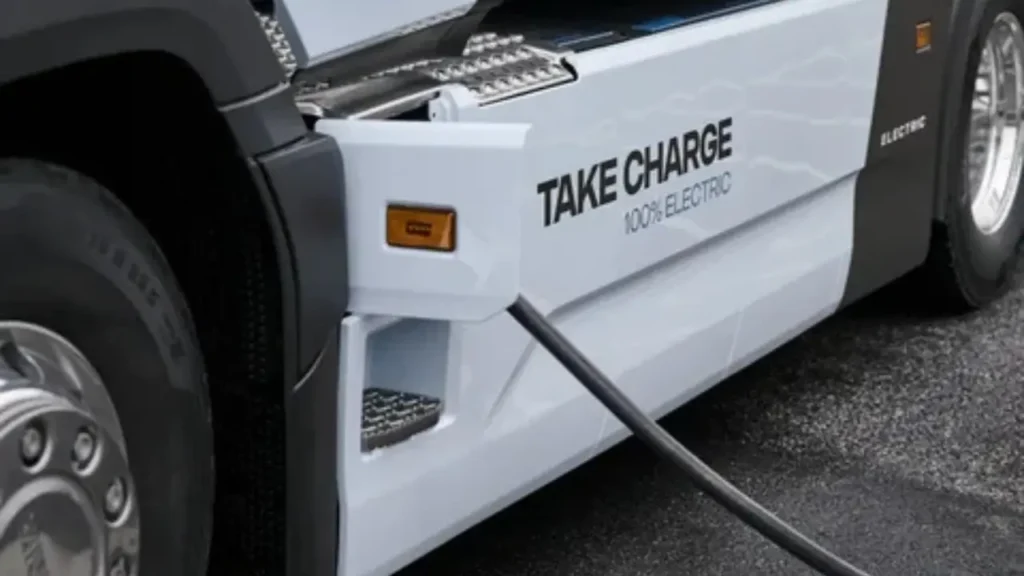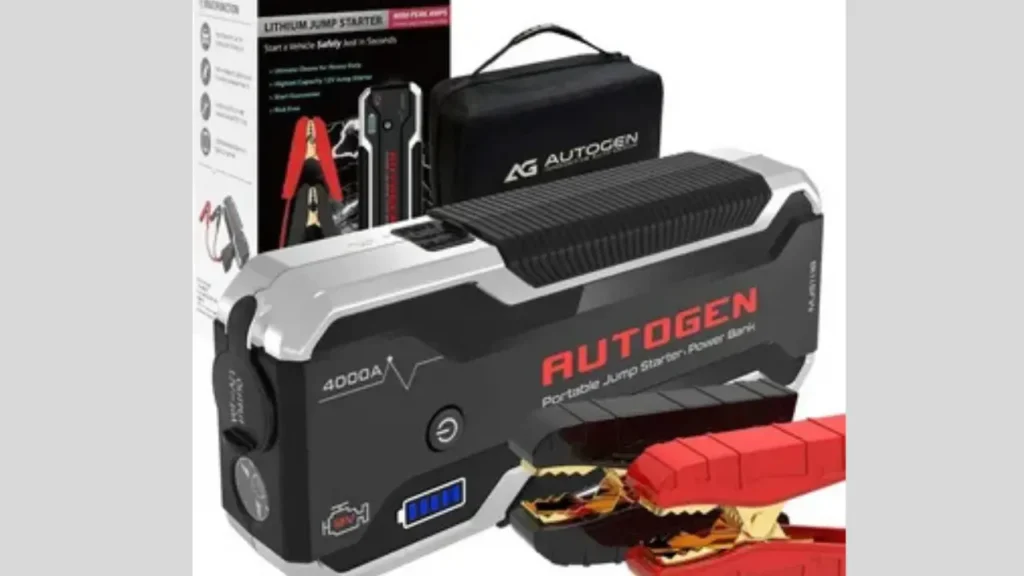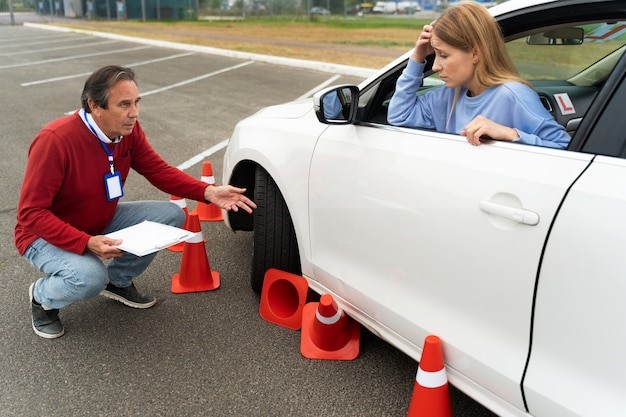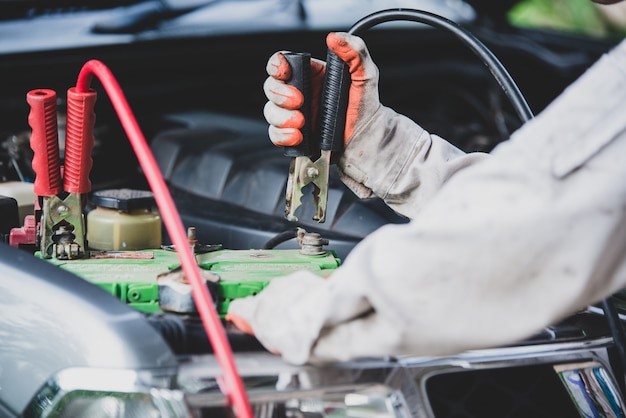When your car battery runs out, you just need to jump-start it with a friend’s car, and it works pretty well. However, with semi-trucks, everything is different. Such robust machinery operates on far larger electrical systems and requires a significant amount of power to start.
Learning the difference between a semi truck jump start and a car start has nothing to do with how to use the appropriate cables, but with safety, voltage and correct procedure. Regardless of whether you are a truck driver, a fleet manager, a roadside technician, or any other job in the highway, understanding these differences can save time and damage, as well as keep everyone safe on the highway.
Why Heavy-Duty Vehicles Need Specialized Jump Start Procedures
Semi trucks are designed to be durable, high-powered and long-range. Most commercial trucks operate on 24-volt systems unlike regular cars which operate on 12-volt systems to provide power to their huge diesel engines and other onboard electronics. This implies that even standard car jump starters would not be strong enough to start them.
The large-capacity batteries fitted in heavy-duty vehicles are also capable of high electrical loading. These systems are meant to be started in cold mode, long-distance commuting, as well as to energize crucial units such as air compressors, heating units and onboard computers. Due to this complexity special jump start procedures are required to work safely with higher voltage, larger cables and stronger currents.
Where Professional Jump Start Services Make a Difference
Semitruck breakdowns along the road are not only inconveniencing but also may halt deliveries, schedules, and cause unnecessary and expensive downtime. That is why the commercial fleet roadside assistance services are so invaluable.
The professional technicians are already supplied with the jump starter heavy-duty kits and knowledge on how to connect to the commercial truck electrical systems safely. They are familiar with the assessment of parallel connection of truck batteries, how to deal with tractor and trailer electricity demands and how to identify problems that extend beyond a dead battery.

The Main Difference: Understanding Semi Truck Electrical Systems
Heavy-Duty Battery Systems
Semi trucks have heavy-duty battery systems that are much more powerful than those in normal cars. A standard car battery has 12 volts and it offers approximately 500-800 cold-cranking amps (CCA). Seismic truck batteries, by contrast, are frequently a series of 12-volt batteries which are interconnected to make a 24-volt system having significantly increased amperage.
This arrangement assists the truck in initiating big diesel motors that consume a lot of energy to activate compressed air and fuel blends. All the batteries should collaborate to generate a stable, high-power output that will be able to make giant engines run in all weather conditions.
Why Truck Batteries Require More Power
Diesel engines require greater torque to start as compared to gasoline engines. The power demands of tractor-trailers are very high; the diesel fuel takes longer to compress and then ignite. That is why the semi-trucks have two or more batteries which are connected in parallel, to provide sufficient current to produce a powerful and steady start.
Multiple Battery Setups and Jump Starting
In jump-starting a semi-truck, you are not linking up to a single battery but a system of them. The parallel association guarantees that the voltage is equal as the current is distributed through batteries. When a single battery fails, it may pull the others. This is the reason why in most cases, professionals would first check every battery prior to giving a jump start to prevent short circuits or unequal distribution of power.
24-Volt vs 12-Volt Jump Start
Voltage Differences
It is a critical difference between a 24-volt and a 12-volt jump start. Most semi-trucks are powered by 24 volts, and cars are powered by 12 volts. A 12-volt car battery will not be sufficient to jump-start a semi. Conversely, when 24 volts are applied to a 12-volt car system, the electrical parts would immediately be rendered useless.
Preventing Electrical Damage
The incorrect voltage may fry the electrical systems of commercial trucks, destroy ECUs (engine control units) or even cause battery explosions. Before connecting cables, always ensure that the system is at the correct voltage. Voltage meters and heavy cables that are rated at the increased load are used by professionals.
Safe Connection Methods
Both batteries should be grounded when they are in a 24-volt system. Wrong connections may lead to arcing or sparks, particularly when jump-starting diesel motors in cold conditions. That is why professional roadside technicians apply insulated clamps, rated boosters and safety check-ups before the inception of the process.
Commercial Truck Electrical Systems Explained
Complexity of Power Distribution
The semi-trucks are unlike the cars because they have complex electrical systems to not only operate the engine but also the use of several subsystems such as lighting, refrigeration, sensors and cabin controls. These systems need a constant voltage and therefore any burst of power is dangerous in case of a jump start.
Common Challenges
Starting can be impacted by such issues as loose cables, corroded terminals, or uneven charge between batteries. That is why the semi-truck alternator capacity and battery condition are checked by experienced technicians before they dare to jump.
The Role of Professionals
A certified professional will be able to detect the presence of battery-related problems or a bigger electrical breakdown. They are conversant with the commercial truck electrical systems, hence guarantee safe and efficient power restoration.
Truck Battery Parallel Connection
In the majority of semi-trucks, the batteries are linked in parallel; that is, the voltage is still 12 volts per unit, but the amperage is raised to provide significant power to satisfy heavy-duty needs. This design will evenly redistribute the load between the batteries and still provide sufficient current to drive big diesel engines.
When using a jump start, it is always important to hook it up in the right way so as to avoid shorting one battery and overloading the other. Before starting, professionals ensure that they check on corrosion, damaged cables, and good grounding.
Tractor-Trailer Power Requirements
A tractor-trailer is a vehicle with huge power demands because several different systems operate simultaneously with engine starters, air brakes, and electrical accessories. These attract hundreds of amps when starting, which is way beyond the capability of car batteries.
This is the reason why truck vs car battery amperage is so dissimilar. A car can be started on 500 amps; however, on a semi-truck, the starter can require 1,500 amps or more to start, based on the engine size and temperature.
Jump Starting Diesel Engines
Diesel engine jump-starting in semi-trucks is a slow and delicate process. A secure step-by-step guide would be as follows:
- Check the batteries for leakage or corrosion.
- The standard voltage is 24 volts.
- Apply a jump starter kit with heavy-duty capabilities in order to use it in commercial vehicles.
- Connect positive to positive, negative to ground on the vehicles.
- Leave the donor vehicle to continue running for several minutes to charge the vehicle.
- Attempt to turn on the semi-truck. In case it is not starting, re-check connections.
- After commencing, allow the truck to run 20-30 minutes in order to recharge the system.
Freezing weather will complicate diesel jump starts since thick oil and cold oil add resistance. Another power that is not negligible is the Glow plugs, which require heavy-duty battery systems to ensure smooth starts.
Semi-Truck Alternator Capacity
A semi-truck alternator is much more powerful compared to that of a car. It is intended to charge a series of large batteries and run cabin electronics, as well as trailers. The capacity of the semi-truck alternator may be 130-300 amps, as compared to approximately 90-120 amps in vehicles.
The alternator has to be able to replenish all the batteries that are attached after a jump start. The truck will stall once again in case the alternator is not functioning adequately. A professional roadside inspection includes checking of alternator output.
Commercial Fleet Roadside Assistance
Time is money when dealing with a fleet. One truck that is delayed due to being stuck on the road may impact delivery schedules and client satisfaction by clients. Commercial roadside assistance is a quick-service and trustworthy assistance of certified technicians with heavy-duty jump starter kits and diagnostic equipment.
Fleet managers should choose a service that provides:
- 24/7 emergency support
- Certified heavy-duty technicians
- On-site diagnostics and electrical testing
- Preventative maintenance programs
Fleets can reduce downtime and ensure smooth operations with the help of the right assistance.

Heavy-Duty Jump Starter Kits
The heavy-duty jump starter kits are of professional grade and powerful enough to jump start semi-trucks without making use of another automobile. They also provide up to 24 volts and thousands of cranking amps.
There are two main types:
- Portable jump boxes: These are suitable when dealing with single truckers or small fleets.
- Professional-grade boosters: These are applied in bigger fleets by roadside services and shops.
When choosing a jump starter, check for:
- Amperage rating (2,000+ amps recommended)
- Compatibility with 24-volt systems
- Safety features like reverse polarity protection
Truck vs Car Battery Amperage
Amperage is the largest distinction between trucks and cars. Semi-truck batteries are constructed to provide a significantly greater amount of current to initiate diesel engines. Where a car battery can supply approximately 600 amps, a truck battery can supply up to 1,500 amps or more.
That is why car jump starters do not always work with semi-trucks; they just do not have enough power. The correct equipment will be safe, efficient and it will not break the expensive truck parts.
Safety Tips for Semi-Truck Jump Starts
- Always confirm system voltage before connecting cables.
- Use heavy-duty cables rated for 24 volts.
- Never mix car and truck batteries during a jump.
- Ground to the frame instead of directly to the negative terminal.
- Avoid jump-starting near fuel leaks or open flames.
- If unsure, call professional roadside technicians instead of attempting a DIY fix.
Conclusion
Semi-truck jump-starting is extremely different from cars because of the heavy battery system, 24-volt power systems, as well as high amperage requirements. These differences are important to enable drivers and fleet operators to remain on the safe side, to maintain the safety of their electrical systems, and to save unnecessary expenses on repairs.
When in doubt, one should always use the services of professionals specialized in commercial fleet roadside assistance and apply the appropriate heavy-duty jump starter kits.
To explore more or schedule professional roadside help, visit All 4 One Transportation today.
FAQs
No, car batteries and cables do not supply enough power and will do electrical harm.
They are normally operated on 24 volts, whereas the majority of cars operate on 12 volts.
The diesel engines require more compression and torque; higher amperage is needed to start them.
Safety: Use heavy-duty jump starter kits or call commercial roadside assistance.
At least 20-30 minutes, to ensure that the alternator will be able to restore the batteries completely.
Yes, low temperatures lower the work of batteries and lead to the thickening of diesel fuel and more complicated starting.




